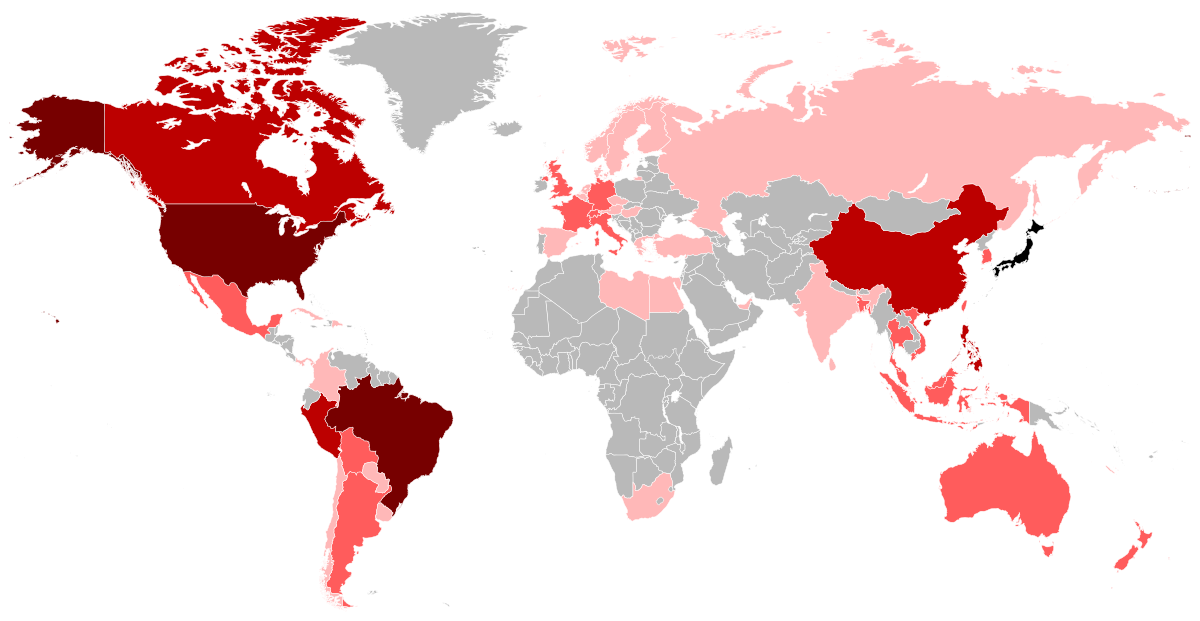FacelessPodcast
Verified Author - Miyazawa Family Murders
- Joined
- Feb 4, 2022
- Messages
- 918
- Reaction score
- 7,434
Murder of Nagoya housewife remains unsolved 24 years later.
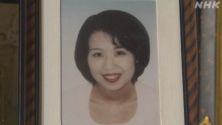
I’m the verified author in the Miyazawa Family Murders thread, where I have mentioned this case in passing several times. I’m writing about Namiko's murder today, both because it deserves to have more light shed on it in the English-speaking world, but also because there are some strong parallels with the Miyazawa case. Both are legally significant as they sit at the forefront of the argument for creating a legal framework in Japan for the use of new DNA techniques in LE investigations. At the time of writing, such a framework is not in place. Namiko's husband, Satoru, still pays the rent on the apartment where her murder took place, preserving both his wife's blood in situ, as well as the killer's. The apartment itself is today a time capsule from 1999, everything left as it was. (The landlord keeps the rent low, the hope being that one day the DNA laws in Japan change and more can be made of the physical evidence in the apartment).
Here follows an in-depth break-down of the case (2,000+ words) pulling on sources such as the Aichi Police; the NPA; the Sankei Shimbun; Chukyo TV News; Tokai TV; and the Mainichi Shumbun, among others. Also, while I'm aware it's not an official source, Rhetorica has a very in-depth video on YouTube. Now, on with the case breakdown.

THE MURDER
The Kato Corp. Building stood in 5-Chome, Inocho, Nishi Ward, Aichi Prefecture. Apartment 201 was an unremarkable family home. Therein lived Satoru, 43, his wife, Namiko, 32, and their son Kohei, a toddler. They were known as a happy, loving family with no obvious enemies. On the 13th of November, 1999, at some time around 12pm, neighbours reported loud noises sounding like "moving furniture, followed by running down the stairs." Around one hour later, the landlord went to the apartment to deliver some fruit and found the door, quite uncharacteristically, unlocked. Peeking inside, she saw Namiko -- her legs in the hallway, her torso laying inside the living room, laying in a pool of blood. But there was blood trailing through the hallway, which had also seemingly accumulated around the entrance of the apartment (in Japanese, the genkan). Paramedics pronounced Namiko dead at the scene and Satoru, who worked in a real estate office, was immediately called home, initially believing his wife had suffered some sort of medical emergency. It was only arriving back at the apartment, where he was forced to stay outside while investigators combed the scene, that he was then informed by paramedics that they believed his wife's death was "unnatural." Thankfully, Kohei was found untouched at the kitchen table, still playing with his toys in silence.
THE LEADS
Detectives entered the apartment which was silent, except for the comedy show playing on the TV: It’s Okay to Laugh! The vacuum was found near the door, making it likely Namiko had been cleaning before the attack. (She was reported to be very cautious when answering the door). Investigators quickly established what paramedics had suspected, as well as the presence of an intruder. Blood was found throughout the hallway, up on walls. Namiko had died face down, her spectacles fallen off her face in the struggle. On her forehead (to the left), there was a pronounced lump. On her neck, she had suffered stab wounds (her severed carotid proving fatal). Her hands displayed typical defensive wounds. There was no evidence of a sexual assault. Detectives found various clues; starting with the blood and multiple footprints. The footprints were a from a 24cm shoe with a heel, which I believe is roughly a UK size 5 (US 7?), produced en masse in South Korea. Police were able to identify them to a batch of some 7,000 delivered to department stores and supermarkets through Northern Kantō and Kyūshū.

Analysis showed that much of the blood, including in the genkan, belonged to the killer. It also showed the perpetrator was a female with blood type B (which accounts for only one fifth of the population). Detectives also concluded that Namiko had possibly injured her killer (though I've seen nothing anywhere that discounts the possibility that she cut herself during the attack, just like in the case of the Miyazawa Family). The killer’s blood trail led both to Namiko's body and to the bathroom (where she washed her wound). Police believed the culprit’s vein was cut meaning she quite possibly suffered a fairly bad injury. In terms of sequence, police believe Namiko was first attacked in the bathroom and then crawled out, ending up half-way inside the living room where she was found. Kohei was in the kitchen (connected to the living room) at his high-chair. Tragically, it's likely the child saw the attack on his mother. Certainly, she was in his line of sight as she took her last breath.
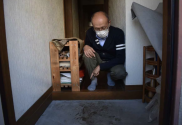
In the living room/kitchen area, police found a noodle cup (of a brand which Namiko did not buy). And, on the kitchen table, at which Kohei had been found unharmed by the landlord, a carton of Yakult. Some of the beverage had been spilled (or possibly vomited) at the genkan. But Satoru was adamant that the family never bought that product and it had not come from within the apartment. Detectives traced the carton itself to a lot sold in an area some 30km southeast of the apartment. While Yakult has various products targeted at infants or younger consumers, this particular carton was intended for adults. Detectives assumed, therefore, the carton was brought in by the killer. (note that no blood was found on the carton).
The apartment itself, however, was largely untouched, no rummaging was evident, and nothing was seemingly taken. The murder weapon never materialised and it’s thought the killer may have brought it with her to the scene (which tells us, perhaps, about her intentions from the jump). As stated, Namiko was careful when opening the door and reportedly took a dim view of salesmen and so on. No forced entry was found. It’s possible, as such, the culprit being a woman may have given Namiko a sense of security when opening the door.
ESCAPE AND WITNESSES
Kohei would say, a year after the crime, around the time of the Miyazawa murders; “Mom fought with a woman I didn’t know. Mommy died. Mommy died.” (There is actually footage of this online, it’s heart-breaking). At the age of 4, he would return to the crime scene and said: “The culprit is the woman from the convenience store.” Satoru notified police of this. However, despite the best work of police councillors, this testimony could ultimately not be relied upon. As an adult, Kohei has said many times that he has no memory of the murder, nor making those statements. The blood patterns in the genkan put police in mind of a killer who waited for a time at the door before fleeing, possibly waiting for the right moment to make good her escape. As stated, neighbours heard quick footsteps down the exterior stairs. Blood was found leading down the stairs and in the parking lot. Not only that, but drops of blood were found in intervals of a few metres throughout the neighbourhood telling police that the culprit had fled in a “zig-zag fashion” heading north.
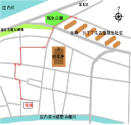
So, we’re talking about a woman, openly bleeding in a suburban neighbourhood in broad daylight, as she hurried down the street. Her zig-zag route through the backstreets made little sense in terms of economy, she could have essentially walked a straight line. However, it makes more sense if she did not have a solid grasp of the local area. Or, she simply wanted to stay off the more traversed direct path. To the north of the apartment, some 500m away, the killer then entered Inou Park, where she again cleaned her wound at the public water fountain. It's also possible she took a moment to wander around the park for a time. (Satoru was asked if it was possible that Namiko had encountered the killer at said park in the past--he doubted it seeing as Namiko had only been there 2-3 times). The killer left the park, now heading east, where she was spotted by a female witness who described a woman around 40-50 years old, around 160cm in height (5’2 or 5’3) with black hair in a perm, reaching her shoulders. She added: "I was surprised as the woman was holding her left hand with her right hand in a very bloody piece of cloth against her chest (the killer quite possibly a lefty). She seemed to be frowning (grimacing?), in pain.”
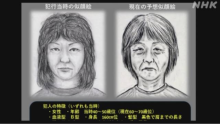
Shortly after this sighting, investigators lost all trace of her. Seeing as the blood trail stopped just after Inou Park outside a housing complex (NTT Complex), investigators looked into the people residing there. But this led nowhere. The complex was torn down not long after the murders. Five minutes after the first sighting, at 12:20pm, there was a second sighting. A male witness, driving his car outside Shotokuji Temple, described the woman identically to the first sighting, except for one difference. The first witness had seen the woman in a black top with black pants, whereas the second said she was wearing a pink sweater and black pants. (None of Namiko’s clothes were reported missing). The man in the car added: “The woman was standing on the corner, she didn’t seem to want to cross at first, but did when I stopped my car.”
The murderer would never be seen again.
THE KILLER
So, what do we know about the killer? We know that she's female--confirmed both by DNA and eye witness accounts. She would be approximately 60-70 years old today. She is Blood Type B. 160cm tall. At one time, she had black, permed hair. She was described as of "medium build" with "single eyelids." Given her injury, it's entirely possible that her (likely left) hand holds a scar to this day. As for her face, witnesses used the word "non-distinct." The police therefore decided not to release the artist’s impression as such a non-distinct face might confuse the public (which makes little sense to me, JMO). However, it was eventually released just a few years ago.
A reward is offered of ¥3m (roughly 20,000USD) for information leading to the apprehension of the killer. As of October 2023, 61 tips have been provided. It is believed the killer has never been arrested before (her DNA is not on the database). Neither of the two witness would describe the woman as in possession of either a weapon, or a bag. Nor was she wearing anything that seemed to be attempting to disguise or hide her identity. Satoru did not recognise the artist’s impression of the culprit. A neighbour, however, reported to police that: a week before the murder, at around 8:10 or 8:20am, a woman that resembled the artist’s impression appeared at the house. “She looked like the sketch because her eyes looked harsh and her hair was wavy and wild. Now that I think about it, she gave me a bad impression. At the time, I saw her talking to Namiko. When I greeted her, I thought she would respond by bowing, but instead she just glared at me. She had a silver case with her… I remember she placed it in between the front door, so it wouldn’t close as she was talking with Namiko.” This tip was made public in November, 2020. To be clear, it was the police who forbade the neighbour from going public with this tip for all that time in order to avoid implicating innocent people.
CONCLUSION
There are various theories swirling around this murder—an affair; a case of mistaken identity; a grudge killing; revenge (based on the actions of Namiko's mother who was involved in some questionable business practices in the past). But we know these all went nowhere. The possibility, of course, of a random attack remains. It would explain why a lack of connection might have hidden the killer so far from being pushed into the light, just as is quite possible with the Miyazawa case. Some theorise, based on the difference in age and beauty of the women, that jealousy might’ve driven the actions of the killer. Others think it was driven by some kind of perverse maternal need or jealousy (though Kohei was left alone, of course). Ultimately, I don’t take a view. The motive, like the killer in the Miyazawa Family case, remains unknown.
For those reading this that have followed the Miyazawa Family murders thread, I’m sure the parallels in this case will be evident. Of course, there are several important differences between them. But the net result is, once again, a home invasion murder, replete with evidence, particularly forensic, yet two decades of silence have passed. (This is in no way to denigrate the work of investigators, I know first-hand how hard-working they are in Japan). Unlike the Miyazawa’s case, here we have actual eye-witnesses and a confirmed direction of travel away from the crime scene. But crucially, Mr. Tabaka still keeps the crime scene perfectly intact (at his own expense, despite living on a pension – the original landlords both passed away but their son pointedly keeps his rent low). There is plastic sheeting in the apartment protecting both his wife’s blood stains, and that of the killer’s. Kohei’s toys are where he left them. A large pile of un-opened mail is making its case as a mound. The calendar stays un-ripped, November 1999. Both Mr. Tabaka and Kohei are actively involved in Sora No Kai, the victim support group that Chief Tsuchita runs (which I have mentioned many times before in the Miyazawa thread). An Irie has previously been involved in it, as is Setsuko Miyazawa, despite being well into her 90s. The Chief campaigns for a change in the law in Japan regarding DNA. For those that don’t know, presently, DNA can only be used in a murder investigation in Japan to compare it to the existing offender database. If there is no match, that’s where DNA is dropped completely. As such, there can be no genetic snapshots, no familial DNA in the vein of GSK etc. For one thing, privacy is deeply revered in Japan. And, even in the event that the law DID change, there are no public DNA databases such as GED Match etc for investigators to cross-reference. The appeal for family tree exploration, 23andMe and so on, is far lower in Japan. But the main stumbling block is that there is no existing legal framework in Japan in this area for DNA to be used in novel ways. However, as seen with the removal of the statute of limitations for murder, after direct pressure from the Sora No Kai group, we know that change is possible.

Just as with the Miyazawa Murders, police hand out flyers to this day, appealing for any information on the case. Satoru and Kohei still hand out flyers on the anniversary of Namiko’s death. Speaking on Chukyo TV in 2023, Kohei would say: “Even though I think it must have been hard [on my father] after the incident, I was raised until I could go to college and get a job, for which I’m very thankful.” His voice almost cracks with emotion as he speaks these words, sitting next to his father. Both men look into space.
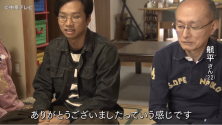
Today, Satoru is the representative secretary of Sora No Kai, where he campaigns for justice tirelessly, along with other victimised family members (including the family of Lindsay Hawker, among others). In 2010, following years of hard work from the group, the law was changed to remove the statute of limitations. Applause resounded in the Diet chamber.
Afterwads, an emotional Satoru would say to Chukyo TV: “I’m really glad we were able to witness this together…” fighting back tears, he would poignantly add. “This evening, for just a little bit… we can be happy. Tomorrow, I want to try my best to catch the culprit again.”

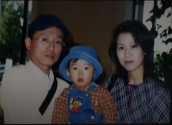

I’m the verified author in the Miyazawa Family Murders thread, where I have mentioned this case in passing several times. I’m writing about Namiko's murder today, both because it deserves to have more light shed on it in the English-speaking world, but also because there are some strong parallels with the Miyazawa case. Both are legally significant as they sit at the forefront of the argument for creating a legal framework in Japan for the use of new DNA techniques in LE investigations. At the time of writing, such a framework is not in place. Namiko's husband, Satoru, still pays the rent on the apartment where her murder took place, preserving both his wife's blood in situ, as well as the killer's. The apartment itself is today a time capsule from 1999, everything left as it was. (The landlord keeps the rent low, the hope being that one day the DNA laws in Japan change and more can be made of the physical evidence in the apartment).
Here follows an in-depth break-down of the case (2,000+ words) pulling on sources such as the Aichi Police; the NPA; the Sankei Shimbun; Chukyo TV News; Tokai TV; and the Mainichi Shumbun, among others. Also, while I'm aware it's not an official source, Rhetorica has a very in-depth video on YouTube. Now, on with the case breakdown.

THE MURDER
The Kato Corp. Building stood in 5-Chome, Inocho, Nishi Ward, Aichi Prefecture. Apartment 201 was an unremarkable family home. Therein lived Satoru, 43, his wife, Namiko, 32, and their son Kohei, a toddler. They were known as a happy, loving family with no obvious enemies. On the 13th of November, 1999, at some time around 12pm, neighbours reported loud noises sounding like "moving furniture, followed by running down the stairs." Around one hour later, the landlord went to the apartment to deliver some fruit and found the door, quite uncharacteristically, unlocked. Peeking inside, she saw Namiko -- her legs in the hallway, her torso laying inside the living room, laying in a pool of blood. But there was blood trailing through the hallway, which had also seemingly accumulated around the entrance of the apartment (in Japanese, the genkan). Paramedics pronounced Namiko dead at the scene and Satoru, who worked in a real estate office, was immediately called home, initially believing his wife had suffered some sort of medical emergency. It was only arriving back at the apartment, where he was forced to stay outside while investigators combed the scene, that he was then informed by paramedics that they believed his wife's death was "unnatural." Thankfully, Kohei was found untouched at the kitchen table, still playing with his toys in silence.
THE LEADS
Detectives entered the apartment which was silent, except for the comedy show playing on the TV: It’s Okay to Laugh! The vacuum was found near the door, making it likely Namiko had been cleaning before the attack. (She was reported to be very cautious when answering the door). Investigators quickly established what paramedics had suspected, as well as the presence of an intruder. Blood was found throughout the hallway, up on walls. Namiko had died face down, her spectacles fallen off her face in the struggle. On her forehead (to the left), there was a pronounced lump. On her neck, she had suffered stab wounds (her severed carotid proving fatal). Her hands displayed typical defensive wounds. There was no evidence of a sexual assault. Detectives found various clues; starting with the blood and multiple footprints. The footprints were a from a 24cm shoe with a heel, which I believe is roughly a UK size 5 (US 7?), produced en masse in South Korea. Police were able to identify them to a batch of some 7,000 delivered to department stores and supermarkets through Northern Kantō and Kyūshū.

Analysis showed that much of the blood, including in the genkan, belonged to the killer. It also showed the perpetrator was a female with blood type B (which accounts for only one fifth of the population). Detectives also concluded that Namiko had possibly injured her killer (though I've seen nothing anywhere that discounts the possibility that she cut herself during the attack, just like in the case of the Miyazawa Family). The killer’s blood trail led both to Namiko's body and to the bathroom (where she washed her wound). Police believed the culprit’s vein was cut meaning she quite possibly suffered a fairly bad injury. In terms of sequence, police believe Namiko was first attacked in the bathroom and then crawled out, ending up half-way inside the living room where she was found. Kohei was in the kitchen (connected to the living room) at his high-chair. Tragically, it's likely the child saw the attack on his mother. Certainly, she was in his line of sight as she took her last breath.

In the living room/kitchen area, police found a noodle cup (of a brand which Namiko did not buy). And, on the kitchen table, at which Kohei had been found unharmed by the landlord, a carton of Yakult. Some of the beverage had been spilled (or possibly vomited) at the genkan. But Satoru was adamant that the family never bought that product and it had not come from within the apartment. Detectives traced the carton itself to a lot sold in an area some 30km southeast of the apartment. While Yakult has various products targeted at infants or younger consumers, this particular carton was intended for adults. Detectives assumed, therefore, the carton was brought in by the killer. (note that no blood was found on the carton).
The apartment itself, however, was largely untouched, no rummaging was evident, and nothing was seemingly taken. The murder weapon never materialised and it’s thought the killer may have brought it with her to the scene (which tells us, perhaps, about her intentions from the jump). As stated, Namiko was careful when opening the door and reportedly took a dim view of salesmen and so on. No forced entry was found. It’s possible, as such, the culprit being a woman may have given Namiko a sense of security when opening the door.
ESCAPE AND WITNESSES
Kohei would say, a year after the crime, around the time of the Miyazawa murders; “Mom fought with a woman I didn’t know. Mommy died. Mommy died.” (There is actually footage of this online, it’s heart-breaking). At the age of 4, he would return to the crime scene and said: “The culprit is the woman from the convenience store.” Satoru notified police of this. However, despite the best work of police councillors, this testimony could ultimately not be relied upon. As an adult, Kohei has said many times that he has no memory of the murder, nor making those statements. The blood patterns in the genkan put police in mind of a killer who waited for a time at the door before fleeing, possibly waiting for the right moment to make good her escape. As stated, neighbours heard quick footsteps down the exterior stairs. Blood was found leading down the stairs and in the parking lot. Not only that, but drops of blood were found in intervals of a few metres throughout the neighbourhood telling police that the culprit had fled in a “zig-zag fashion” heading north.

So, we’re talking about a woman, openly bleeding in a suburban neighbourhood in broad daylight, as she hurried down the street. Her zig-zag route through the backstreets made little sense in terms of economy, she could have essentially walked a straight line. However, it makes more sense if she did not have a solid grasp of the local area. Or, she simply wanted to stay off the more traversed direct path. To the north of the apartment, some 500m away, the killer then entered Inou Park, where she again cleaned her wound at the public water fountain. It's also possible she took a moment to wander around the park for a time. (Satoru was asked if it was possible that Namiko had encountered the killer at said park in the past--he doubted it seeing as Namiko had only been there 2-3 times). The killer left the park, now heading east, where she was spotted by a female witness who described a woman around 40-50 years old, around 160cm in height (5’2 or 5’3) with black hair in a perm, reaching her shoulders. She added: "I was surprised as the woman was holding her left hand with her right hand in a very bloody piece of cloth against her chest (the killer quite possibly a lefty). She seemed to be frowning (grimacing?), in pain.”

Shortly after this sighting, investigators lost all trace of her. Seeing as the blood trail stopped just after Inou Park outside a housing complex (NTT Complex), investigators looked into the people residing there. But this led nowhere. The complex was torn down not long after the murders. Five minutes after the first sighting, at 12:20pm, there was a second sighting. A male witness, driving his car outside Shotokuji Temple, described the woman identically to the first sighting, except for one difference. The first witness had seen the woman in a black top with black pants, whereas the second said she was wearing a pink sweater and black pants. (None of Namiko’s clothes were reported missing). The man in the car added: “The woman was standing on the corner, she didn’t seem to want to cross at first, but did when I stopped my car.”
The murderer would never be seen again.
THE KILLER
So, what do we know about the killer? We know that she's female--confirmed both by DNA and eye witness accounts. She would be approximately 60-70 years old today. She is Blood Type B. 160cm tall. At one time, she had black, permed hair. She was described as of "medium build" with "single eyelids." Given her injury, it's entirely possible that her (likely left) hand holds a scar to this day. As for her face, witnesses used the word "non-distinct." The police therefore decided not to release the artist’s impression as such a non-distinct face might confuse the public (which makes little sense to me, JMO). However, it was eventually released just a few years ago.
A reward is offered of ¥3m (roughly 20,000USD) for information leading to the apprehension of the killer. As of October 2023, 61 tips have been provided. It is believed the killer has never been arrested before (her DNA is not on the database). Neither of the two witness would describe the woman as in possession of either a weapon, or a bag. Nor was she wearing anything that seemed to be attempting to disguise or hide her identity. Satoru did not recognise the artist’s impression of the culprit. A neighbour, however, reported to police that: a week before the murder, at around 8:10 or 8:20am, a woman that resembled the artist’s impression appeared at the house. “She looked like the sketch because her eyes looked harsh and her hair was wavy and wild. Now that I think about it, she gave me a bad impression. At the time, I saw her talking to Namiko. When I greeted her, I thought she would respond by bowing, but instead she just glared at me. She had a silver case with her… I remember she placed it in between the front door, so it wouldn’t close as she was talking with Namiko.” This tip was made public in November, 2020. To be clear, it was the police who forbade the neighbour from going public with this tip for all that time in order to avoid implicating innocent people.
CONCLUSION
There are various theories swirling around this murder—an affair; a case of mistaken identity; a grudge killing; revenge (based on the actions of Namiko's mother who was involved in some questionable business practices in the past). But we know these all went nowhere. The possibility, of course, of a random attack remains. It would explain why a lack of connection might have hidden the killer so far from being pushed into the light, just as is quite possible with the Miyazawa case. Some theorise, based on the difference in age and beauty of the women, that jealousy might’ve driven the actions of the killer. Others think it was driven by some kind of perverse maternal need or jealousy (though Kohei was left alone, of course). Ultimately, I don’t take a view. The motive, like the killer in the Miyazawa Family case, remains unknown.
For those reading this that have followed the Miyazawa Family murders thread, I’m sure the parallels in this case will be evident. Of course, there are several important differences between them. But the net result is, once again, a home invasion murder, replete with evidence, particularly forensic, yet two decades of silence have passed. (This is in no way to denigrate the work of investigators, I know first-hand how hard-working they are in Japan). Unlike the Miyazawa’s case, here we have actual eye-witnesses and a confirmed direction of travel away from the crime scene. But crucially, Mr. Tabaka still keeps the crime scene perfectly intact (at his own expense, despite living on a pension – the original landlords both passed away but their son pointedly keeps his rent low). There is plastic sheeting in the apartment protecting both his wife’s blood stains, and that of the killer’s. Kohei’s toys are where he left them. A large pile of un-opened mail is making its case as a mound. The calendar stays un-ripped, November 1999. Both Mr. Tabaka and Kohei are actively involved in Sora No Kai, the victim support group that Chief Tsuchita runs (which I have mentioned many times before in the Miyazawa thread). An Irie has previously been involved in it, as is Setsuko Miyazawa, despite being well into her 90s. The Chief campaigns for a change in the law in Japan regarding DNA. For those that don’t know, presently, DNA can only be used in a murder investigation in Japan to compare it to the existing offender database. If there is no match, that’s where DNA is dropped completely. As such, there can be no genetic snapshots, no familial DNA in the vein of GSK etc. For one thing, privacy is deeply revered in Japan. And, even in the event that the law DID change, there are no public DNA databases such as GED Match etc for investigators to cross-reference. The appeal for family tree exploration, 23andMe and so on, is far lower in Japan. But the main stumbling block is that there is no existing legal framework in Japan in this area for DNA to be used in novel ways. However, as seen with the removal of the statute of limitations for murder, after direct pressure from the Sora No Kai group, we know that change is possible.

Just as with the Miyazawa Murders, police hand out flyers to this day, appealing for any information on the case. Satoru and Kohei still hand out flyers on the anniversary of Namiko’s death. Speaking on Chukyo TV in 2023, Kohei would say: “Even though I think it must have been hard [on my father] after the incident, I was raised until I could go to college and get a job, for which I’m very thankful.” His voice almost cracks with emotion as he speaks these words, sitting next to his father. Both men look into space.

Today, Satoru is the representative secretary of Sora No Kai, where he campaigns for justice tirelessly, along with other victimised family members (including the family of Lindsay Hawker, among others). In 2010, following years of hard work from the group, the law was changed to remove the statute of limitations. Applause resounded in the Diet chamber.
Afterwads, an emotional Satoru would say to Chukyo TV: “I’m really glad we were able to witness this together…” fighting back tears, he would poignantly add. “This evening, for just a little bit… we can be happy. Tomorrow, I want to try my best to catch the culprit again.”


Last edited:


